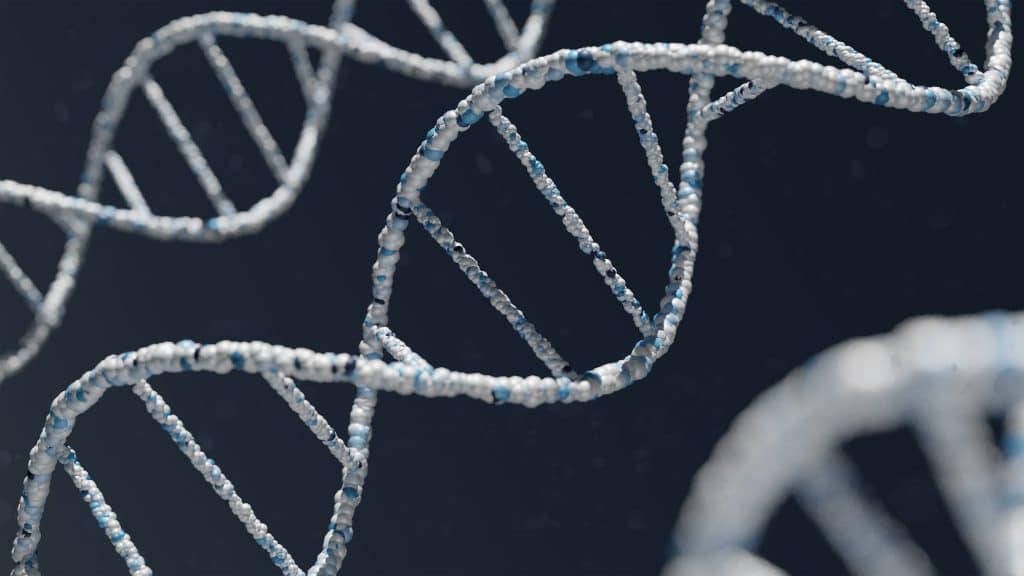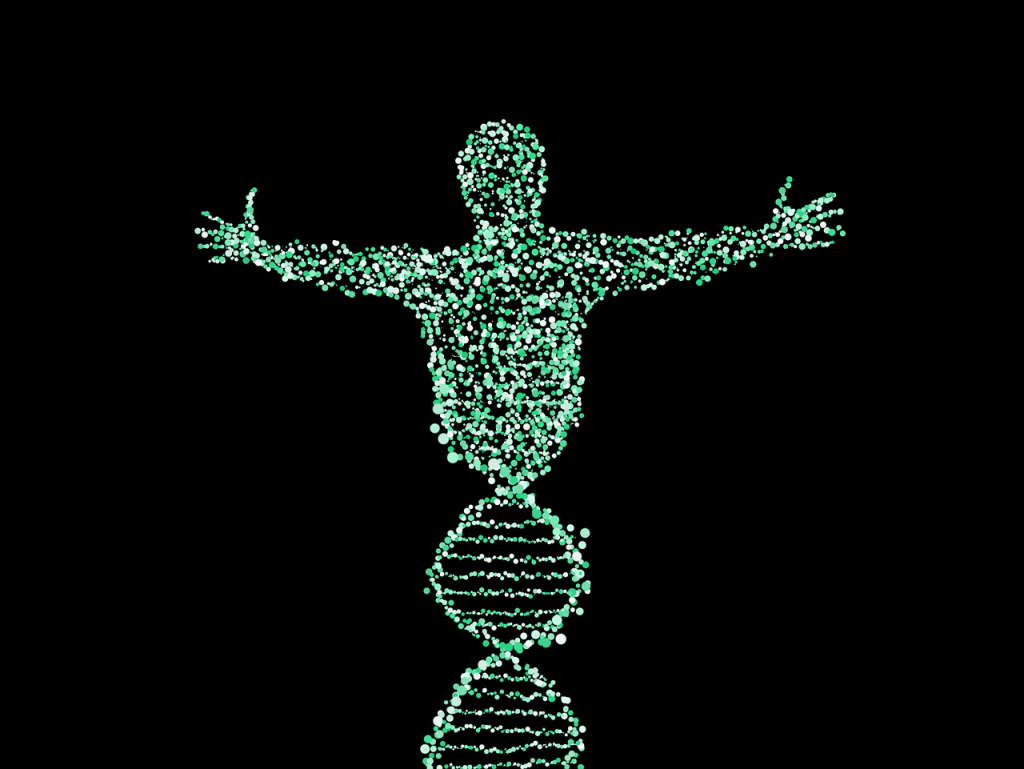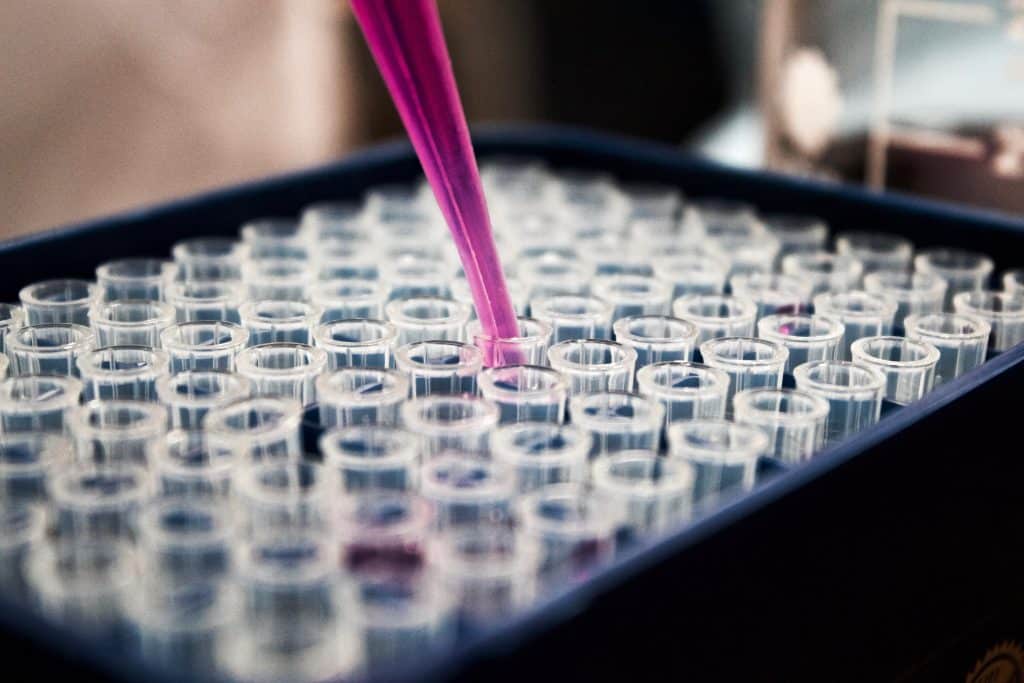Whether it’s an unsolved murder from 20 years ago or parents finally reuniting with their biological daughter, DNA technology has played a crucial role in many people’s lives throughout history.
Our research into DNA has provided us with so much invaluable insight. If you want to get a glimpse into what we’ve learned about DNA, scroll down and take a gander at these DNA statistics.
We’ll cover a broad range of intriguing information in this article, so you’re bound to learn at least something new. So sit back and enjoy this lovely collection of statistics about DNA.
Top DNA Facts: Editor’s Choice
- The human genome contains around 3 billion base pairs of DNA.
- All humans are 99.9% identical in their genetic makeup.
- DNA has a half-life of 521 years.
- Humans share about 50% of their DNA with bananas.
- Every cell in the human body has 6 feet 5 inches of DNA.
- Human DNA is compressed into 23 pairs of chromosomes.
- Human beings share 98.7% of their DNA with chimpanzees and bonobos.
- On average, siblings share around 50% of the same DNA.
Fascinating DNA Statistics
1. The human genome contains around 3 billion base pairs of DNA.
Let’s start this list of cool facts about DNA with a look at the human genome.
Every human cell contains 23 pairs of chromosomes, giving a total of 46 chromosomes. Moreover, each chromosome contains hundreds to thousands of genes that provide the instructions for making proteins — essential elements in the body.
2. All people are 99.9% identical in their genetic makeup.
DNA testing statistics have shown that only 0.01% of the 3 billion base pairs in the human genome are unique to each individual. This 0.01% accounts for all the differences we see in the human population.
3. DNA has a half-life of 521 years.
However, it could even be longer under certain circumstances. For example, a burial temperature of 13.1°C could slow down the process by almost 400 times.
Although it sounds bizarre, we want to tell you how much of our DNA is shared with bananas.
Apparently, human beings share half of their DNA with bananas. Seeing how different we are from bananas, that’s quite shocking. Humans also share 85% DNA with mice and 61% with fruit flies.

More Fun Facts About DNA
5. The most extended chromosomes contain around 250 million nucleotide pairs.
Chromosomes contain extremely long strands of DNA. The lengths of said strands can vary, but they all contain millions of base pairs. Naturally, the more pairs they contain, the longer they are.
DNA facts show that scientists figured out which chromosomes have the most and which have the least nucleotide pairs.
According to their findings, Chromosome 21 is the shortest, whereas Chromosome 1 is the longest. Respectively, they hold around 48 and 249 million base pairs.
6. Each cell in the human body has 6 feet 5 inches of DNA.
Although crammed into a single cell, a DNA strand is incredibly long. Seriously, few people realize how long DNA is.
If you expand a single tightly-bundled DNA strand, you’d see that its length is more than the average height of a human. It’s outstanding that DNA fits into a mere 0.09 micrometers of space.
7. Human DNA is compressed into 23 pairs of chromosomes.
The first 22 pairs are named autosomes, while the 23rd pair containing sex chromosomes makes the difference between females (XX) and males (XY).
The sex chromosomes define the sex of children. The mother always provides an X chromosome, but the father can provide either an X or a Y chromosome.
8. Human beings share 98.7% of DNA with chimpanzees and bonobos.
Facts about DNA show that these primates are our closest living relatives. This is because humans, bonobos, and chimps descended from the same ancestor that lived six or seven million years ago.
9. The grooves in DNA’s helices are 34 Å apart.
DNA is constructed of double-stranded molecules with a unique “double helix” shape, like a twisted ladder. The distance between the grooves of a single helix is so infinitesimal that we measure it with a unit called angstrom.
For those who don’t know, 1 Å (or angstrom) describes a distance of 0.1 nanometers. Just to give you some perspective, a single water molecule is 1.5 nanometers in size.
10. Genes make up only 3% of our DNA.
Here’s an interesting fact about DNA (or a concerning one, depending on how you look at things). Namely, a very small percentage of our DNA is actual genes.
As for the remaining 97%, we just aren’t sure what they do. Scientists theorize that this majority is responsible for regulating transcription and translation.

Interesting Facts About DNA
11. Around 8% of our DNA comes from ancient viruses.
Research has revealed that the DNA of every human being contains a small percentage of DNA from retroviruses we’ve collected throughout human evolution.
For some, that’s one of the more frightening facts about DNA structure. But the fear is ungrounded — these viral remnants are harmless in most cases.
The only exception is a chance of inheriting herpesvirus-6. In other words, this fraction of viral DNA can make you come down with roseola in early childhood.
12. One gram of DNA holds approximately 455 exabytes of information.
While trudging through DNA fun facts, we came upon this data. So that you know, 1 exabyte can hold the text of around 320 billion King James editions of the Bible.
13. On average, siblings share around 50% of the same DNA.
When thinking about how much DNA siblings share, most people would probably say the vast majority. But that doesn’t seem to be the case.
On average, siblings share only half of the same DNA, while half-siblings share 25% of the same DNA. Siblings that share 100% of their DNA are identical twins.
Although biological siblings have the same family tree, their genetic code might differ in surprising ways.
14. DNA suffers environmental damage of 1,000–1,000,000 per cell every day.
Stats and facts about genetics and heredity have demonstrated that DNA neither replicates perfectly nor does it stay unchanged over time. Minute damage accumulates over time and deteriorates DNA.
But few realize how much damage DNA endures. Every day, in every cell, it suffers anywhere between 1,000 and 1,000,000 molecular lesions.
15. Less than 10% of DNA tests are wrong.
The history of DNA testing is more than a century long. Over the decades, it has been improving in terms of accuracy.
The chance of a modern DNA testing process providing inaccurate information is very small. Moreover, when done daily, the process gradually becomes more precise.
16. Progeria affects 1 out of 200,000 newborns in the United States.
Progeria, also known as Hutchinson-Gilford syndrome, happens due to a mutation in the lamin A (LMNA) gene. It essentially causes accelerated aging. The condition cannot be cured, but new DNA technology has provided better ways to detect it in fetuses.
Many children with progeria die of age-related disorders around the age of 13, but some can live into their twenties.

History of Forensics, Salaries, and More
17. In 2019, the forensic science technicians’ average annual wage was $59.150.
Forensic science technicians help criminal investigations by accumulating and analyzing evidence. The average annual forensic science technicians’ pay in 2019 was $28.44 per hour.
Moreover, forensic science technicians’ employment is predicted to increase by 14% from 2019 to 2029.
18. In 1892, fingerprints were used as evidence for the first time.
It was in a case that may be the first instance of forensic profiling as we know it today. In Buenos Aires, Argentina, Inspector Eduardo Alvarez was the first to use criminal fingerprint identification.
By using this technology, he identified Francisca Rojas, a woman guilty of murdering her two sons and killing herself in an attempt to frame someone else.
Key Takeaways
We’ve learned incredible things from these DNA statistics. But we also came upon a humbling truth, one that shows us how little we actually know about the building blocks of life. After all, we barely understand 3% of the DNA sequence.
We have made great strides in this field. Modern forensics and genetics are continually pushing our limits of knowledge about DNA. Who knows, we might be mere decades away from answering some of life’s most profound questions.
Frequently Asked Questions
DNA includes the instructions to build other cell elements, such as RNA molecules and proteins. The information encoded in DNA strands regulates the genetic structure of organisms.
DNA includes four bases, called A, T, C, and G. However, the principal function of DNA is to encode the sequence of amino acid residues in proteins using a genetic code.
No, DNA is not a protein. DNA consists of a sugar-phosphate background and a nitrogenous base, while proteins are large molecules composed of one or more long chains of amino acids.
Four types of biomolecules exist — nucleic acids, carbohydrates, lipids, and proteins. DNA is a type of nucleic acid, and deoxyribonucleotides are its monomeric unit. A deoxyribonucleotide consists of a nitrogen base, deoxyribose sugar, and phosphate.
DNA includes the instructions necessary for life to exist and replicate itself. The code within our DNA dictates how to make proteins essential for our growth and overall health.
However, DNA is a vitally crucial molecule for humans and most other organisms. It includes our hereditary material and our genes. DNA is what makes us unique.
Today, DNA identity tests are used in forensic and paternity identification, while other clinical forms are based on forensic examination methods.
They involve evaluating donor hematopoietic engraftment after bone or heart transplantation and chimerism analysis after regular organ transplantation. Also, DNA identity testing can be used to estimate tumor transmission.
DNA testing started in the 1980s as an element for the identification of an individual. Jeffrey Glassberg registered the first pattern in 1983, including the direct use of DNA modification for forensics.
Forensics technology shows that Dr. Jeffery first used DNA in a criminal investigation in 1986. The investigation applied genetic fingerprinting to two crimes and murders in a small UK town in 1983 and 1986. DNA profiling has been notably successful in testing crime scenes and parenthood.
Under perfect circumstances, DNA would last about 6.8 million years, after which all its molecular bonds would be broken. However, the oldest reported DNA was located in Greenland ice, and it’s estimated to be between 450,000 and 800,000 years old.
Some discovered Neanderthal DNA was estimated to be 100,000 years old, while the oldest human DNA ever discovered was 5,000 to 7,000 years old.
DNA evidence is as reliable as the systems used for testing it. If these systems are sloppy, imprecise, or prioritize particular results over accuracy, the DNA evidence they provide can’t be reliable.
However, DNA testing is very accurate when done correctly. On the other hand, DNA statistics demonstrate that, although narrow, it still has a margin of error.
